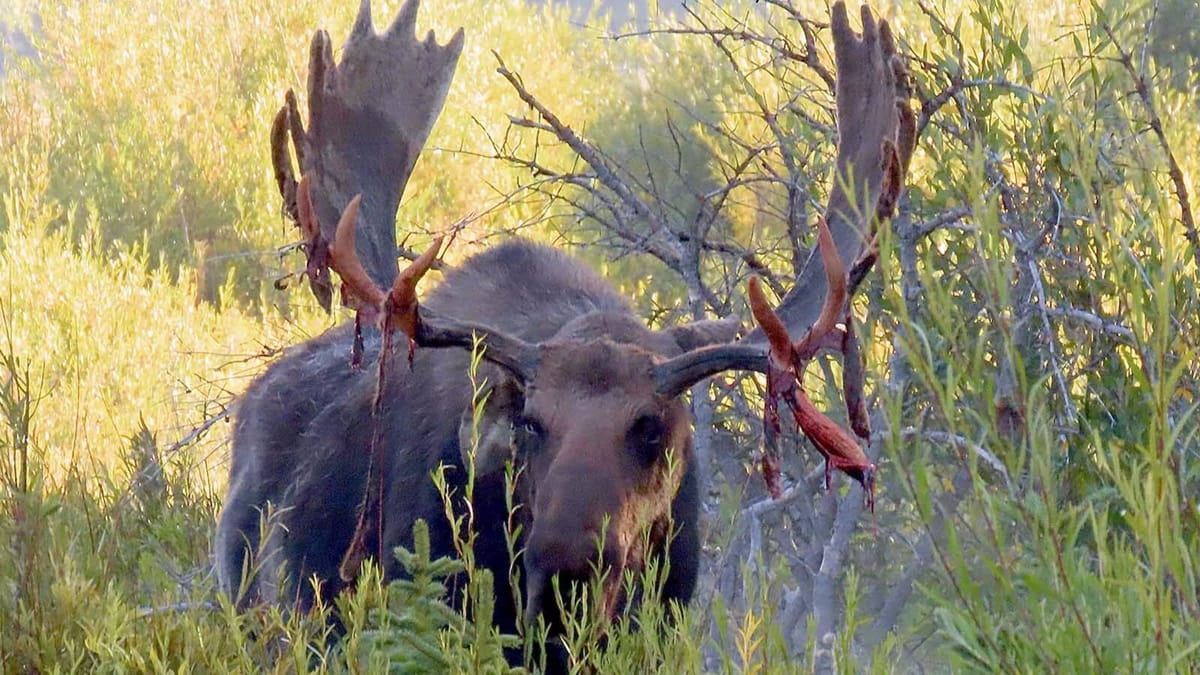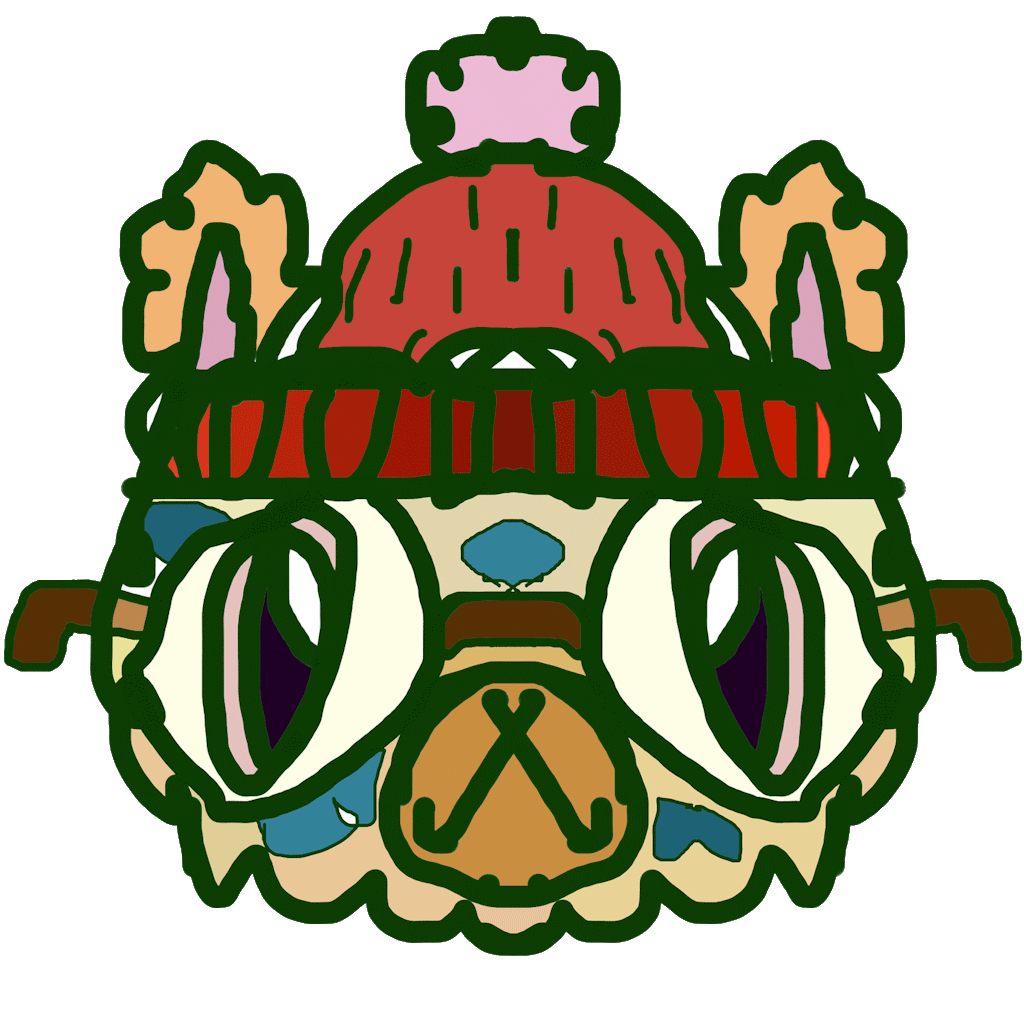Hoback, King of the Tetons

Hoback, the largest bull moose in the park, is considered King of the Tetons. Seen above with the blood and entrails of his enemies, still dangling from his antlers, this vicious beast has killed more people than smallpox!
Ok, sorry, almost none of that is true but it was just too scary of a picture to not see if I could get you excited. So it is true that this is a picture of Hoback, the largest bull moose and that he is considered the King of the Tetons. The part that isn't true is that the red stuff hanging from his antlers are entrails and blood.
Warning! Educational content follows!!!
Moose actually have a red velvet layer form on their antlers during the summer. As Winter approaches they start to shed the red velvet. The red stuff in his antlers is the velvet sloughing off. (sloughing is a real word, I swear!)
For those new to moose, let's take a quick quiz!
A. Each year Deer and Moose kill 200x more people than Bears and Wolves combined
B. Each year Moose attack more people than Bears
C. Neither of these are true
D. A and B are true
The answer is.... D! Ok, so for A, this is actually true but with a couple of misleading parts. So first, Bears and wolves on average, only kill 1 or 2 people a year. The big misleading part to this one is that deer and moose kill 440 people a year... by coming through your windshield when you're driving 70mph on the highway. 😛 Hitting deer is common and kills quite a few people each year.
A farmer once told me that if you're driving in your car, you should always try to hit a pig instead of a cow. I don't know why he wanted to do those things but the logic for his choice applies here. If you hit a pig, it is low enough to the ground that it mostly just destroys your car bumper and hood. However, if you hit a cow (or deer/moose), it is tall enough that it will just roll across your hood and come through the window.
Question B is also true and is more important but also needs some context—moose attack more people each year than bears but that is at least in part due to people treating bears with more respect than moose or bison. If they see a grizzly bear, they will usually keep their distance and treat it with respect. However, if people see a moose or a bison, far more are likely to try and go right up to them for a selfie.
Now for some moose facts!
- Size: Moose are the largest members of the deer family. Adult males (bulls) can weigh up to 1,500 pounds and stand 6-7 feet tall at the shoulder.
- Antlers: Only male moose grow antlers, which they shed annually. These antlers can spread up to 6 feet from tip to tip and weigh up to 70 pounds.
- Diet: Moose are herbivores and can eat up to 70 pounds of vegetation per day. They're known to dive underwater to feed on aquatic plants.
- Swimming ability: Despite their large size, moose are excellent swimmers. They can swim up to 6 miles per hour and stay afloat for several hours.
- Lifespan: In the wild, moose typically live 15-25 years.
- Distribution: Moose are found in northern forests of North America, Europe, and Asia. In North America, they range from Alaska to the northeastern United States.
- Unique features: Moose have a flap of skin called a bell or dewlap that hangs from their throat. Its exact purpose isn't fully understood.
- Vision: Moose have poor eyesight but excellent hearing and sense of smell.
- Speed: Despite their bulky appearance, moose can run up to 35 miles per hour over short distances.
- Predators: Adult moose have few natural predators besides humans, but wolves, bears, and cougars may prey on calves or weakened adults.
Also, do not try and carve your initials on a moose with the sharpened end of a tooth brush or else it might try and bite your sister. (shout out to Monty Python fans!)
